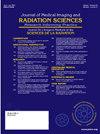儿科临床专科放射治疗师(CSRT):推进儿科放射治疗的护理和创新
IF 1.3
Q3 RADIOLOGY, NUCLEAR MEDICINE & MEDICAL IMAGING
Journal of Medical Imaging and Radiation Sciences
Pub Date : 2025-05-01
DOI:10.1016/j.jmir.2025.101956
引用次数: 0
摘要
目的/目的我们的放射治疗科每年治疗约130名儿科癌症患者,与儿科医院密切临床合作。从2024年开始,我们部门在儿科项目中实施了第一个CSRT角色。这篇摘要的目的是概述我们机构的儿科放射治疗过程,并描述与实施儿科CSRT角色相关的独特益处和挑战。开发CSRT角色的过程涉及对儿科项目中当前临床工作流程的回顾。有必要确定护理中的瓶颈和差距,并确定CSRT如何最好地支持临床护理团队。它也有助于确定我们机构的其他csrt如何将自己融入临床领域。了解他们在团队中的角色范围和贡献,为儿科CSRT角色的发展提供了关键的见解。最后,与儿科护士和放射肿瘤学家的密切合作对于确定儿科CSRT改善护理服务、优化工作流程和简化流程的机会至关重要。结果或利益/挑战实现这个独特的角色带来了挑战,因为必须仔细考虑可能最终不会使团队受益的路径。决定哪些新技能是优先考虑的,哪些可能与项目的需求不一致,有时是一项艰巨的任务。此外,负责照顾儿科患者的大型跨学科团队跨越多家医院,这又增加了这一过程的复杂性。然而,拥有一个具有丰富临床经验和放射治疗儿科患者技术知识的CSRT是一项无价的资产。他们为学生和放射治疗师提供教学和指导。在不断的技术进步中,他们确保儿科患者优先获得最新的治疗和创新。他们不断探索改进流程的方法,并确定新的研究机会。与此同时,他们仍然专注于确保儿科患者的独特需求得到充分满足。结论/影响在审查现有护理模式的过程中,我们的目标是继续改善儿科患者的体验,同时保持创新的前沿。过去儿科项目的举措包括消除儿科患者的永久性纹身,以及分享我们减少全身麻醉使用的经验。最近实施的儿科CSRT将使我们能够进一步推进这项工作,并找到照顾我们最脆弱患者的新方法。在塑造这一角色以满足部门和项目需求的同时,它无疑将对儿科护理产生积极影响,无论是在我们的机构还是在其他地方。本文章由计算机程序翻译,如有差异,请以英文原文为准。
The Pediatric Clinical Specialist Radiation Therapist (CSRT): Advancing Care and Innovation in Pediatric Radiotherapy
Purpose/Aim
Our radiotherapy department treats approximately 130 pediatric cancer patients per year, working in close clinical collaboration with the pediatric hospital. Starting in 2024, our department implemented the first CSRT role within a pediatrics program. The aim of this abstract is to provide an overview of pediatric radiotherapy processes at our institution, and to describe the unique benefits and challenges associated with the implementation of a pediatric CSRT role.
Methods/Process
The process of developing this CSRT role has involved a review of current clinical workflows within the pediatric program. It was necessary to identify bottlenecks and gaps in care, and to determine how best a CSRT can support the clinical care team. It has also been helpful to determine how other CSRTs at our institution have integrated themselves within the clinical space. Understanding scope of their roles and contributions within their teams has provided critical insights into how the pediatric CSRT role can evolve. Finally, close collaboration with pediatric nurses and radiation oncologists has been essential in identifying opportunities for the pediatric CSRT to improve care delivery, optimize workflows, and streamline processes.
Results or Benefits/Challenges
Implementing this unique role has presented challenges, as there had to be careful consideration of paths that may not ultimately benefit the team. Deciding which new skills to prioritize and which may not align with the program's needs has at times been a daunting task. Additionally, the large, interdisciplinary team responsible for caring for pediatric patients spans multiple hospitals, adding another layer of complexity to the process. However, having a CSRT with extensive clinical experience and technical knowledge in treating pediatric patients within the radiation therapy setting has been an invaluable asset. They provide teaching and mentorship to students and radiation therapists. Amidst ongoing technological advancements, they ensure that pediatric patients are prioritized for access to the latest treatments and innovations. They are constantly exploring ways to improve processes and identify new research opportunities. All the while, they remain focused on ensuring that the unique needs of pediatric patients are fully met.
Conclusions/Impact
In the process of reviewing the model of care that currently exists, we aim to continue improving pediatric patient experience while remaining at the forefront of innovation. Past initiatives of the pediatric program have included eliminating permanent tattoos for pediatric patients and sharing our experience minimizing general anesthesia use. The recent implementation of a pediatric CSRT will enable us to further advance this work and identify new ways to care for our most vulnerable patients. While shaping this role to meet department and program needs continues to be explored, it will no doubt have a positive impact on pediatric care, both at our institution and beyond.
求助全文
通过发布文献求助,成功后即可免费获取论文全文。
去求助
来源期刊

Journal of Medical Imaging and Radiation Sciences
RADIOLOGY, NUCLEAR MEDICINE & MEDICAL IMAGING-
CiteScore
2.30
自引率
11.10%
发文量
231
审稿时长
53 days
期刊介绍:
Journal of Medical Imaging and Radiation Sciences is the official peer-reviewed journal of the Canadian Association of Medical Radiation Technologists. This journal is published four times a year and is circulated to approximately 11,000 medical radiation technologists, libraries and radiology departments throughout Canada, the United States and overseas. The Journal publishes articles on recent research, new technology and techniques, professional practices, technologists viewpoints as well as relevant book reviews.
 求助内容:
求助内容: 应助结果提醒方式:
应助结果提醒方式:


